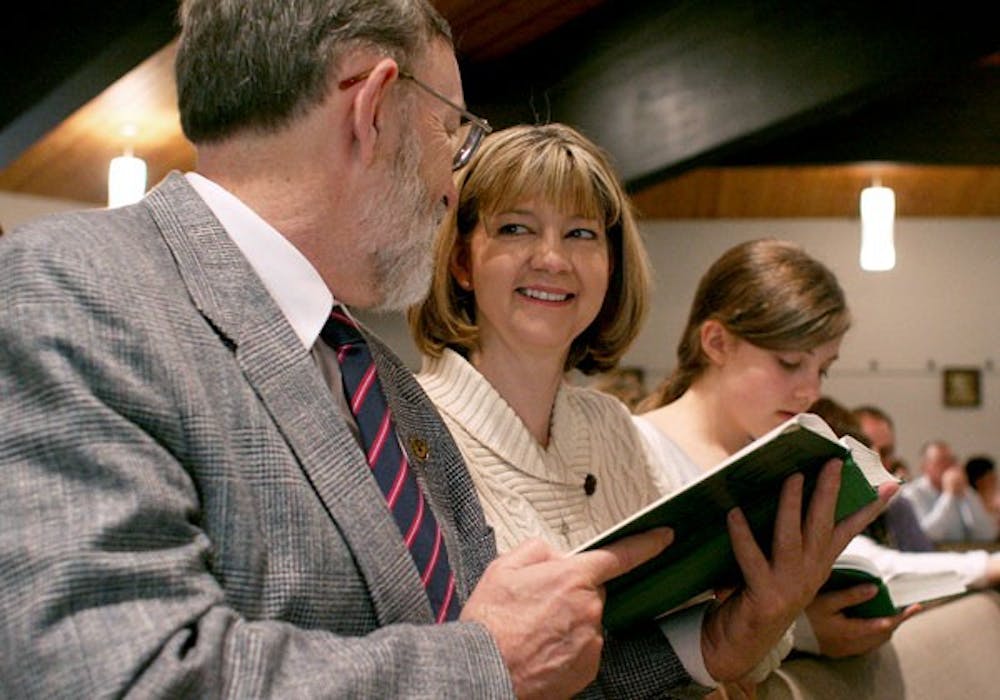Department chairman’s wife carries on while waiting for kidney transplant

A name is added to the national organ transplant list every 11 minutes.
Six months ago, Julie Stinson was one of them.
The 45-year-old was diagnosed with systemic lupus erythematosus 20 years ago and was finally placed on the national transplant list for a kidney in the fall of 2009. The condition is a chronic, inflammatory autoimmune disorder that commonly affects the kidney.
Her husband, Michael Stinson, 61, chairman of Central Michigan University’s computer science department, said it has been a tough road — especially because of the couple’s 13-year-old daughter, Megan.
“It’s difficult because there is always that fear in the back of your mind,” he said. “I don’t like to talk or think about it because it’s my wife. I’m older, but I always thought she would be there to take care of (Megan).”
Julie first knew she had a problem when she was 26 and working at an investment banking firm.
“It was a stressful job. I was stressed out and I wasn’t getting enough sleep,” she said. “I had swelling in my joints and pain and swelling in my hands. It spread to other parts. It took almost three months to diagnose; I had to do all sorts of tests. I went to a rheumatologist first then, once my kidneys got involved, I went to the nephrologist.”
She said there are many hardships a person with SLE must overcome.
“My energy level is down. I can’t do as much as I want to, I need more naps,” she said. “I can’t interact with my daughter as much and I feel guilty. I hope she understands one day.”
April is Organ Donor Awareness Month and about 100,000 are on the organ donation waiting list.
With that in mind, the Stinsons want to remind everyone to become a donor if possible.
“Everyone should donate after they’ve passed; that’s a no-brainer,” Michael said. “When you realize the value of an organ, that it can save someone’s life, you can feel good about (donating) for the rest of your life. And the thing people should know is that there is no statistical difference in lifespan after you have donated.”
The Stinsons are anxious knowing, at any time, they could get the call for Julie to receive a kidney.
“It’s kind of scary,” Julie said. “I’m not as afraid of the transplant itself, I trust (the doctors) — it’s more the anti-rejection meds and what follows (the surgery).”
A dean’s donation
When Dean of Students Bruce Roscoe heard Richard Davenport, a former vice provost of academic affairs, had a son in need of an organ, he did not hesitate to have himself checked as a possible match for donating.
Roscoe learned he was compatible for Ryan Davenport, 17 at the time, and decided to donate one of his kidneys.
Twenty years later, Roscoe said he still has no regrets.
“I didn’t have any kids at that time, so I was just like, ‘Boy, I would hope someone would step up if it was my kid,’” he said.
Roscoe is passionate about organ donation and emphasizes there is no long-term physical effects of donating.
“How can you not do it? To think of how many lives can be enhanced by a donor is remarkable,” he said. “It’s something you always feel good about doing,”
It all comes down to helping your fellow human being, Roscoe said.
“Take care of one another, take care of the guy next to you,” he said. “If I can do this to help him, help him! That’s what it’s all about, taking care of one another.”



